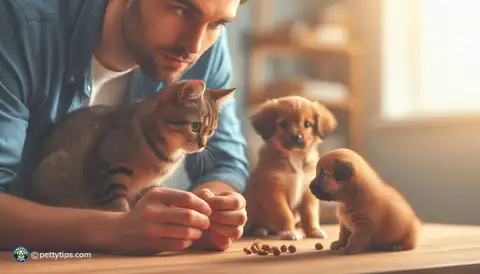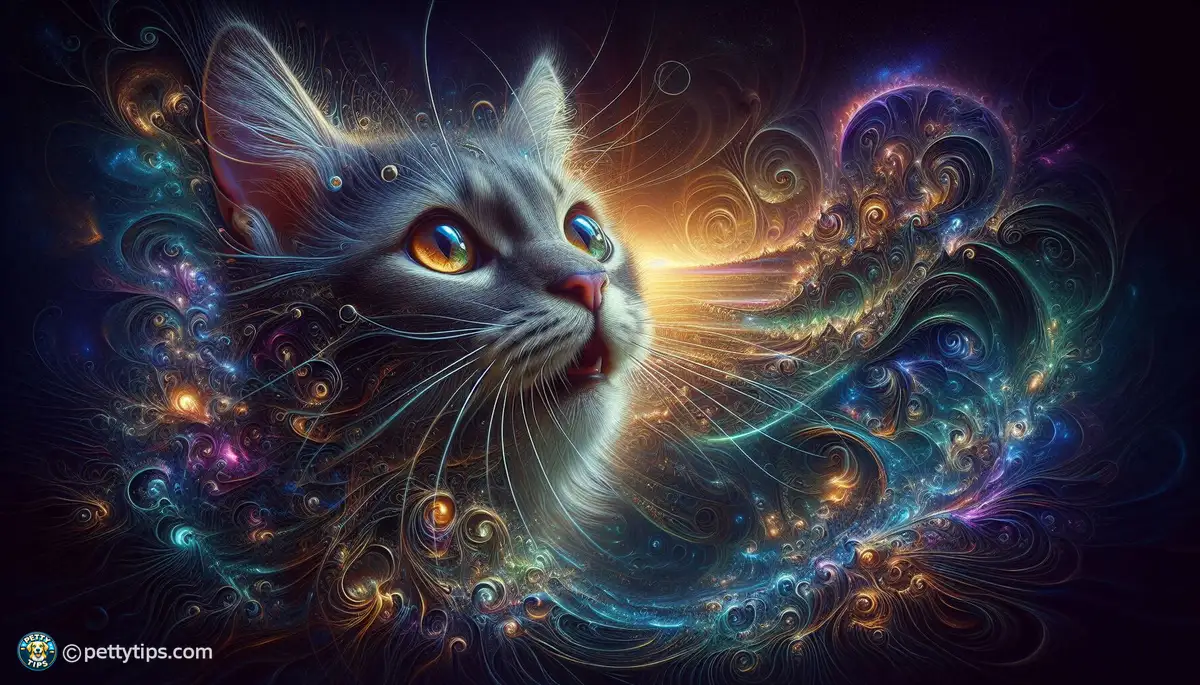
Introducing New Pets to an Anxious Cat: A Comprehensive Guide
Earl Bolt - Sep 21, 2024 - 6 min read


Have you ever noticed your cat making strange noises that aren't quite meows? Cats have a rich repertoire of vocalizations, each serving a unique purpose in their communication with us and with other cats. Among these intriguing sounds are chirping and trilling, which often leave cat owners wondering what they mean. Let's delve into the fascinating world of feline vocalizations and unravel the mystery behind these distinct sounds.
Chirping and trilling are vocalizations that cats use to express various emotions and needs. While meows are commonly associated with communication between cats and humans, chirps and trills are more often observed in cat-to-cat interactions. Chirping typically resembles a series of short, high-pitched sounds, while trilling involves a combination of short, melodic notes. Understanding the contexts in which cats produce these sounds can provide valuable insights into their behavior and emotions.
To truly grasp the significance of chirping and trilling in cats, it's essential to explore their evolutionary origins. Like many other aspects of feline behavior, these vocalizations can be traced back to the wild ancestors of domestic cats. In the wild, chirping and trilling served as effective means of communication among feral cat colonies, facilitating coordination during hunting and social interactions. Despite the domestication of cats, these innate vocalizations have persisted, albeit with some modifications influenced by their interactions with humans.
One of the most common scenarios in which cats exhibit chirping behavior is when they observe prey, such as birds or insects, through a window. This behavior is thought to be an expression of their innate hunting instincts. By producing chirping sounds, cats may be attempting to mimic the sounds made by their prey, potentially enhancing their chances of catching it. This behavior is particularly prevalent in indoor cats who may not have the opportunity to engage in actual hunting.
Trilling, on the other hand, is often associated with social interactions among cats. When a cat trills, it's typically in response to seeing another cat or a familiar human. This friendly greeting serves as a form of communication and can help strengthen social bonds within a multi-cat household. Trilling may also be accompanied by other body language cues, such as rubbing against the person or cat being greeted, further reinforcing the positive interaction.
In addition to their roles in hunting and social communication, chirping and trilling can also indicate a cat's contentment and happiness. You may notice your cat chirping or trilling when they're in a relaxed and comfortable environment, such as when they're lounging in a sunny spot or receiving affection from their favorite human. These vocalizations, often accompanied by purring and kneading, signify a state of relaxation and satisfaction.
Just as every cat has a unique personality, their vocalizations can also vary significantly from one individual to another. Some cats may be more vocal than others, while certain breeds are known for being particularly chatty. Similarly, the frequency and intensity of chirping and trilling can vary depending on the cat's age, health, and overall temperament. Understanding your cat's baseline vocalizations can help you interpret their chirps and trills more accurately.
External factors can also influence a cat's vocalizations, including chirping and trilling. Changes in the environment, such as the presence of unfamiliar animals or loud noises, may prompt a cat to vocalize more frequently as a way of expressing discomfort or anxiety. Conversely, a peaceful and familiar environment can encourage contented chirps and trills as the cat feels secure in its surroundings.
Cats are highly adaptable creatures capable of forming strong bonds with their human companions. Chirping and trilling can play a significant role in their interactions with humans, serving as a form of communication to express needs, preferences, and emotions. By paying attention to your cat's vocalizations and responding appropriately, you can strengthen your bond and enhance your understanding of their unique language.
When your cat chirps or trills in your presence, acknowledging their vocalizations with affectionate attention can reinforce positive behavior. Responding with gentle petting, verbal praise, or offering treats can encourage further communication and strengthen your bond with your cat. By validating their efforts to communicate with you, you create a supportive and nurturing environment that fosters trust and companionship.
While vocalizations provide valuable insights into a cat's emotions and intentions, they should be interpreted in conjunction with other forms of communication, such as body language. Pay attention to your cat's posture, facial expressions, and tail movements to gain a more comprehensive understanding of their state of mind. By observing these subtle cues, you can respond appropriately to your cat's needs and preferences.
In some cases, changes in a cat's vocalizations, including excessive chirping or trilling, may indicate an underlying medical issue that requires attention. If you notice any sudden or unexplained changes in your cat's vocal behavior, it's essential to consult with a veterinarian to rule out any potential health concerns. Prompt veterinary care can help address any underlying issues and ensure your cat's continued health and well-being.
Chirping and trilling are fascinating vocalizations that provide valuable insights into the complex world of feline communication. By understanding the contexts, purposes, and factors influencing these sounds, cat owners can deepen their bond with their furry companions and provide them with the care and attention they need. Whether it's mimicking prey during playtime, greeting a familiar friend, or expressing contentment in a loving home, chirps and trills serve as a unique language through which cats communicate their thoughts, emotions, and desires. Embrace the mystery and magic of feline vocalizations, and enjoy the special connection you share with your beloved cat.